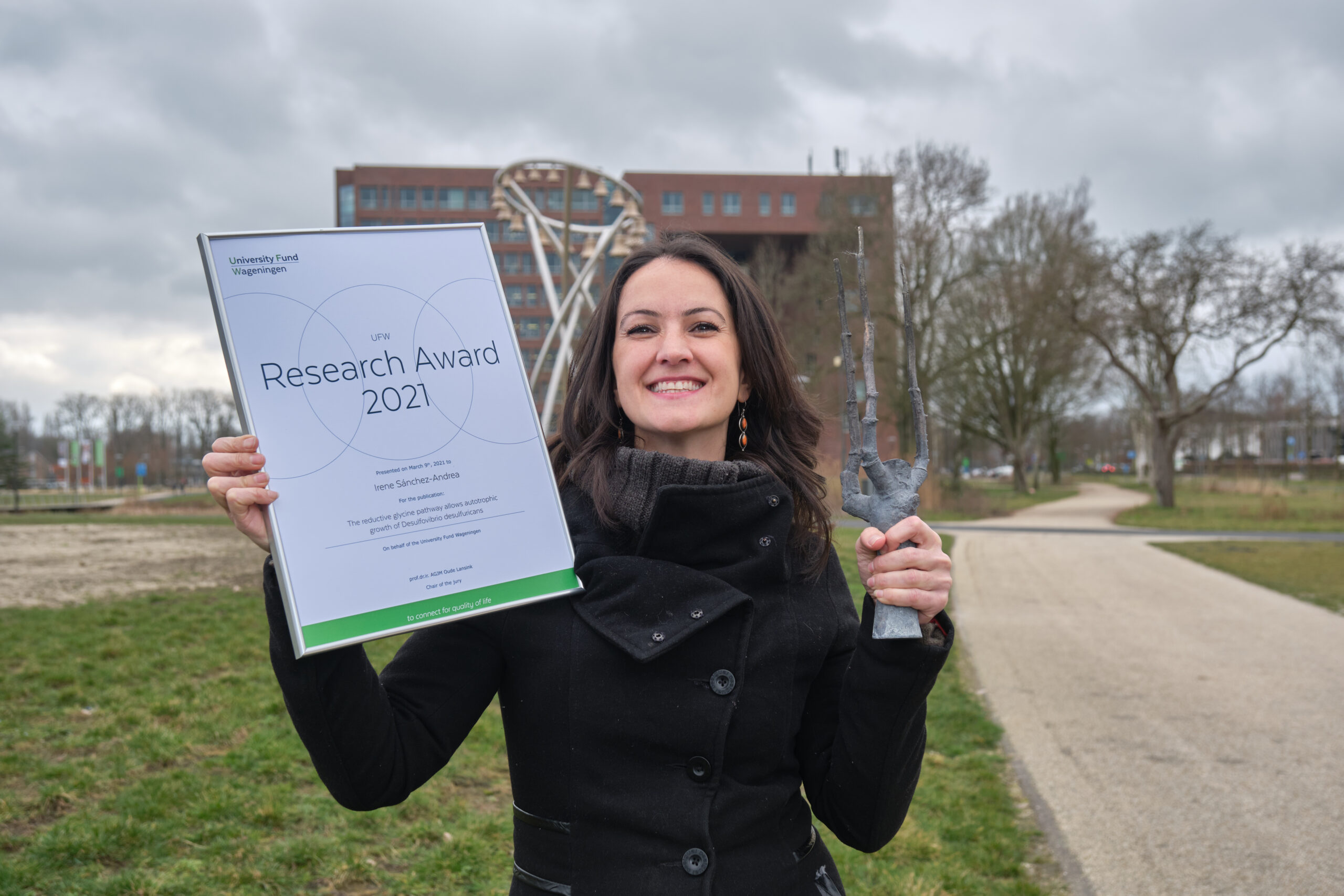Some bacteria and archaea are capable of growing with carbon dioxide (CO2) as their only source of carbon, just like plants. They convert CO2 into organic matter via six different pathways, and biologists have been looking for a seventh route for decades. Last year, a seventh route was found by Irene Sánchez-Andrea, a researcher at the Laboratory for Microbiology at WUR.
Sánchez-Andrea studied Desulfovibrio desulfuricans, a bacterium that lives in sediments and soils under oxygen-free conditions. This bacterium grows on a mix of hydrogen, sulphate and CO2, all inorganic compounds. Sánchez-Andrea received University Fund Wageningen’s Research Award 2021 for her discovery.
Sánchez-Andrea’s tutor Fons Stams was already studying Desulfovibrio desulfuricans in 2008. Researchers first though this bacterium needed organic matter to grow, but it was then proven capable of growing on formate, a simple carbon compound, along with another microbe. Originally, it was thought that this microbe provided D. desulfuricans with organic compounds, but that theory was disproven. Sánchez-Andrea discovered that this bacterium could grow in the absence of organic compounds. After three years of laboratory experiments and computer analyses, she identified the chemical pathway by which the bacterium makes carbon building blocks out of CO2.
‘It was my hobby project,’ says Sánchez-Andrea, a Tenure Track assistant professor at the university. ‘It was very time-consuming and there were lots of challenges, such as making sure the growth medium doesn’t contain any organic compounds. Chemicals or glassware that have been used to prepare mediums can contain organic compounds, but we couldn’t allow any contamination at all.’ They worked with researchers from the Max Planck Institute in Potsdam and UC Berkeley, who were also looking for the seventh pathway.
It was my hobby project
They found a unique pathway in this bacterium, in which nitrogen and CO2 were converted into formate and glycine. Glycine, C2H5NO2, is an amino acid that goes on to be converted into biomass. Sánchez-Andrea published these results in Nature Communications in October 2020. Her discovery of this pathway is not just a scientific achievement but also useful knowledge for tackling climate issues and developing a biobased economy. D. desulfuricans appears to convert CO2 into biomass and chemicals in a fairly energy-saving fashion. Making use of this, Sánchez-Andrea aims to culture the bacterium on a large scale for the production of useful chemicals such as biofuels. ‘The bacterium grows in the lab. The next step is to expand the range of products, to grow more of them on an industrial scale, and also to introduce the pathway into other bacteria that grow easily in bioreactors. That makes it possible to produce chemical building blocks on a large scale with little energy and fix CO2 at the same time.’
Sánchez-Andrea also wants to find out whether there are more bacteria that can do this trick or others like it with CO2, possibly with the help of a few other variants of the pathway. Perhaps relatives of D. desulfuricans can make chemicals for the biobased economy out of inorganic materials.

 Irene Sánchez-Andrea, winnaar Research Award 2021, University Fund Wageningen
Irene Sánchez-Andrea, winnaar Research Award 2021, University Fund Wageningen